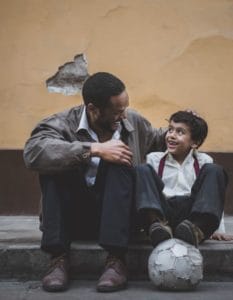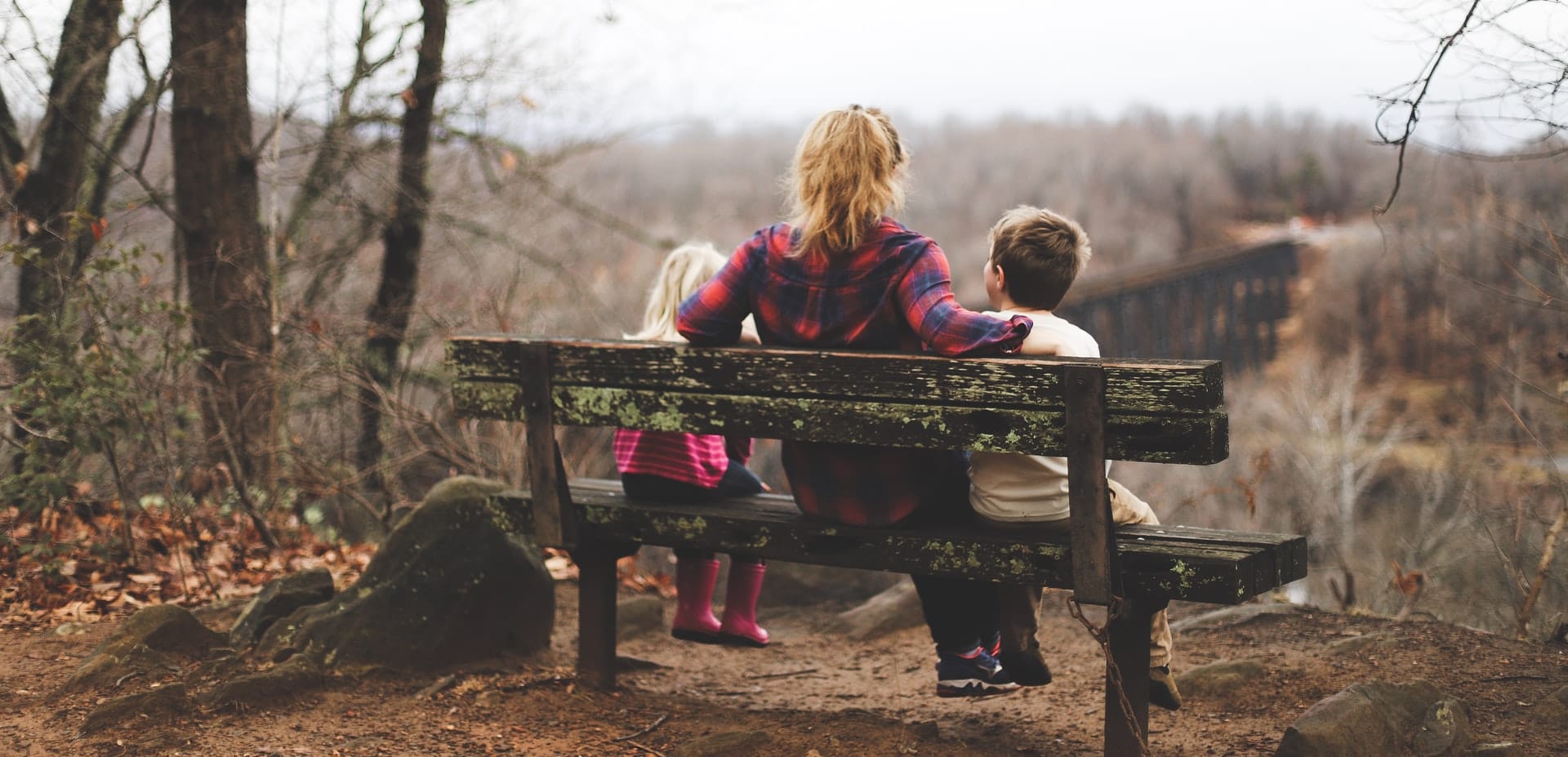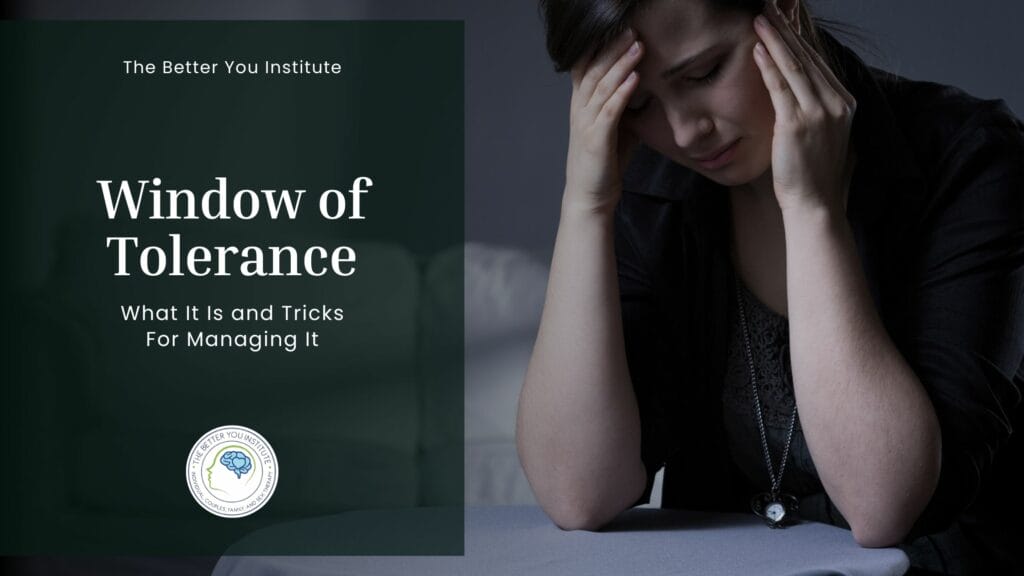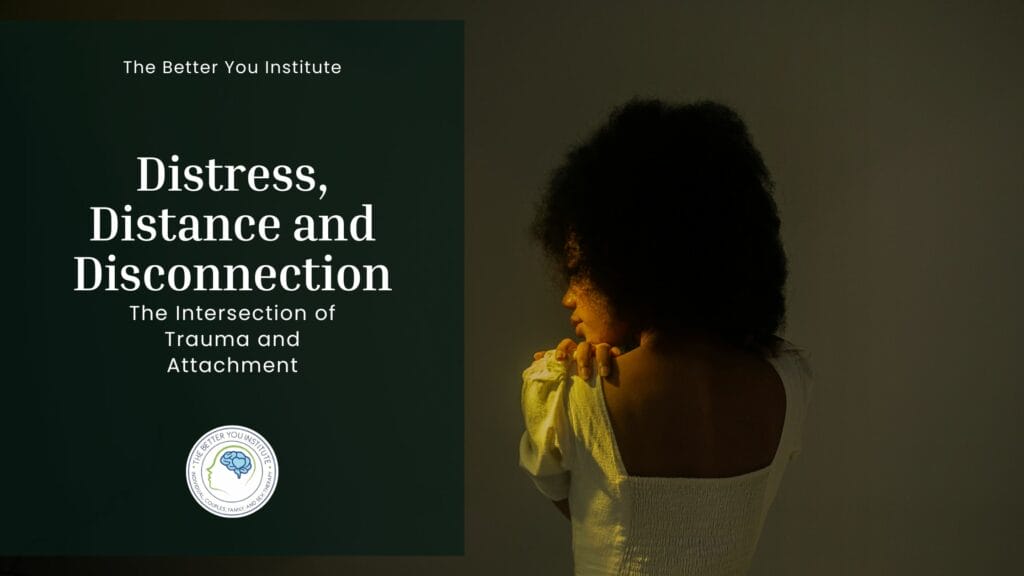Whether you are a biological parent, adopted parent, foster parent, or serve in another caregiving role, your job is really hard. Being a caregiver is one of the most thankless jobs/roles that there is in the world. For whatever way or reason you are now in the caregiver role, at The Better You Institute, we see you.
On top of having to keep your child alive, you are also responsible for keeping them safe, fed, and working towards becoming a successful (future) adult in society. If your child is successful in growing up and adjusting well to adulthood, no one arrives at your doorstep to say, “congratulations, you did your job well! Here is society’s appreciation!” Outside of life’s milestones, the most frequent time you are notified of your role in your child’s life is when they are in trouble or not meeting expectations.
Table of Contents
Caregiver Roles and Difficulties in the Parent-Child Connection
 When something “bad” happens with your child, members of society notify you in various ways that your child might be developing in a way that might not lead to success. There could be many types of thoughts and beliefs that can come into a caregiver’s mind. Questions about the child’s behaviors and motivations, perceptions on how to handle disciplining the child, fears of what could happen if these types of behaviors persist, or even perceptions of your parenting abilities may be a typical pattern that occurs when your child’s concerns are brought to your attention. Add in your perceptions about the needs of the other members of your family, your job, bills, and other adult stressors occur before you can even think of focusing on your own needs as a human!
When something “bad” happens with your child, members of society notify you in various ways that your child might be developing in a way that might not lead to success. There could be many types of thoughts and beliefs that can come into a caregiver’s mind. Questions about the child’s behaviors and motivations, perceptions on how to handle disciplining the child, fears of what could happen if these types of behaviors persist, or even perceptions of your parenting abilities may be a typical pattern that occurs when your child’s concerns are brought to your attention. Add in your perceptions about the needs of the other members of your family, your job, bills, and other adult stressors occur before you can even think of focusing on your own needs as a human!
It is even worse when you know that something is bothering your child, but they will not say anything to you, or anyone else, about what they are struggling with. Watching a child dealing with the effects of something stressful on their own is difficult for any caregiver. It can add increased anxiety for a caregiver when the effects of the child’s stress are leading to academic difficulties, arguments within the home, seclusion/separation from others, lack of wanting to play with friends, increased defiance, aggression, and/or self-harm behaviors.
Feelings of hopelessness and helplessness can creep into a caregiver’s beliefs if the stress within family relationships, a home environment, community, and a nation all begin to compound upon one another into a seemingly impossible mountain to overcome. Although a future blog post will discuss how to increase your support system, as a caregiver, it will be important to take one small step to address a part of something that may feel out of control: Emotion (Co)Regulation.
Thinking about Caregiving Clinically
In the family therapy model, Eco-Systemic Structural Family Therapy (ESFT), emotion regulation is one of the 4 pillars of treatment. Emotion regulation is (basically) how well a person can handle distressing situations in order to calm themself down. Learning this skill starts from being a baby and continues throughout a person’s lifetime. Though, an important phrase that is often said is: Emotion regulation is co-regulation. Thinking back to when a person is a baby, a lot of a baby’s ability to cope and manage emotions, while learning about the world, is related to how a caregiver helps to join in soothing behaviors. This starts out by helping a baby get their needs met. As babies turn into toddlers, caregivers will continue this co-regulation process when helping a child. This might be through holding a toddler when they get hurt or upset, putting bandaids or kisses on “boo-boos,” or sitting with them when they begin to have crying spells when they haven’t taken a needed nap. The relationship between a child and caregiver changes as the child gets older and begins to develop more. This development leads to boundary-testing, learning about oneself, and exploring the world.
Using Co-Regulation to Build Better Attachment
 Part of the importance of establishing an appropriate co-regulation system for a child is helping them establish a strong, secure attachment to themselves and the world around them, namely through their caregiver. To help establish this attachment within the child, the caregiver must tap into their ability to first be regulated before helping a child to regulate. Depending on your own attachment style, there are so many times when co-regulation can be very difficult. Imagine being short on time, and having to go to a grocery store with your child/children. While hurrying to pick up items for dinner, your child asks for something. When it is denied, the child throws themself onto the floor of the grocery store and begins to cry and flail loudly. As a caregiver watching the situation, thoughts such as “We do not have time for this,” “Why are we not able to do just a simple chore without it turning into something difficult,” or “This situation is so embarrassing; what if others see and judge me for how inconsiderate and loud we are being right now.” I imagine that as these thoughts begin to flow through your stream of thoughts, feelings such as anxiety, anger, embarrassment, fear, despair, and/or even shame might come up.
Part of the importance of establishing an appropriate co-regulation system for a child is helping them establish a strong, secure attachment to themselves and the world around them, namely through their caregiver. To help establish this attachment within the child, the caregiver must tap into their ability to first be regulated before helping a child to regulate. Depending on your own attachment style, there are so many times when co-regulation can be very difficult. Imagine being short on time, and having to go to a grocery store with your child/children. While hurrying to pick up items for dinner, your child asks for something. When it is denied, the child throws themself onto the floor of the grocery store and begins to cry and flail loudly. As a caregiver watching the situation, thoughts such as “We do not have time for this,” “Why are we not able to do just a simple chore without it turning into something difficult,” or “This situation is so embarrassing; what if others see and judge me for how inconsiderate and loud we are being right now.” I imagine that as these thoughts begin to flow through your stream of thoughts, feelings such as anxiety, anger, embarrassment, fear, despair, and/or even shame might come up.
Despite having an intention to complete a task quickly, now there is a caregiver and a child who are emotionally dysregulated. Although the grocery store example is a simple one, I am sure that you can think about times when situations occur that lead you to experiencing unpleasant feelings. It is not only important to understand the unpleasant feelings and thoughts, but also the resulting actions that follow. Generally, people are not able to help others regulate their emotions when they themselves are also having difficulties regulating their own emotions. This might end up in caregivers speaking to their children in ways that are shame based and dismissive, invalidating, or provoking. Examples of this could be seen as “I’ll give you something to cry about,” “There are kids who have it worse,” or “What’s your problem?”. As you can sense, we are only as good at regulating others as we are at regulating ourselves and working through our own internal experiences. There are many things that impact a family’s ability to regulate their emotions. It is also important to look at some other factors before talking about what can be done to change the impact.
BIPOC Community Stressors and the Impact on Children
Outside of normal family stressors that impact family’s abilities to co-regulate their emotions, there are additional influences that compound the stressors of families in the BIPOC community. Institutional racism is ingrained into the fabric of the United States. Whether it is within healthcare/medical, financial, education, housing, legislative, or criminal justice systems, BIPOC families are under consistent pressures, prejudices, oppressive forces, implicit biases and segregation, and/or historical and current traumas that are carried around like a weight everyday. This stress turns into chronic stress over time. Although time can be taken to talk about the implications of chronic stress’s effects on families in relation to feelings of helplessness/hopelessness, aggression, crime, and lower health and life outcomes, for this article, we are just going to talk about the effect on relationships within the home.
Dealing with chronic stress alone is hard, but having to also deal with the responsibilities of being a caregiver to a BIPOC child who is dealing with their own difficulties, plus the impact of structural racism, makes being a caregiver even more difficult. Dealing with this as a child or teen without having the life experience as an adult can lead to feelings of helplessness, hopelessness, and despair. What this looks like in real life is: Academic difficulties, arguments within the home, seclusion/separation from others, lack of wanting to play with friends, increased defiance, aggression, and/or self-harm behaviors. With teens, this can even begin to escalate to behaviors such as: Hanging out with the “wrong crowd”/gang affiliation, increases in defiant behaviors leading to potential criminal activities (i.e., stealing, lying, fighting, eloping from the home, not following directions/curfew, aggression language towards others, increases in self-harm behaviors (drinking, smoking, cutting oneself), and increases of suicide ideation.
What Can Be Done to Help?
 After thinking about chronic stress, caregiving, and the impacts on what children and teens look to as outlets, it will be important to talk about ways to work against the stressors. Although there are many different interventions that can be used to work on this complex issue, we will turn our attention to a way to improve the parent-child relationship through emotion regulation.
After thinking about chronic stress, caregiving, and the impacts on what children and teens look to as outlets, it will be important to talk about ways to work against the stressors. Although there are many different interventions that can be used to work on this complex issue, we will turn our attention to a way to improve the parent-child relationship through emotion regulation.
Slow things down
Noticing that things might be feeling out of control is the first step. Once that is known, it is important to work on slowing yourself down. Checking in with your breathing, any tension in your body, and your mood is another step that can be used. Use this opportunity to check in with yourself. If needed, take a few moments to take a few breaths (unless something harmful or dangerous is occurring).
Read between the lines
Next, it is important to understand what is happening in the situation. If you had the privilege of raising your child from birth, or as a baby, you will know that a child has a different cry for different needs (i.e., “feed me,” “change me,” “I want attention,” “I am tired,” “I am in pain/something is wrong”). Think about what you did to pick up what your infant/baby needed at that time. There was an increase in concentration and focus to be able to understand what was needed from you to help the child. This process does not change as babies grow into children/teenagers.
Children/teenagers will use their words, laughter, defiance, objections, arguments/fighting, or even rule-breaking in order to signal to a caregiver that something “is wrong and I need help.” With this understood, it is important to read between the lines of what your child is saying to understand what they are needing from you as they more often than not won’t come out and directly tell you. They may not be at that stage, developmentally, where they have the language skills and knowledge how to use the skills appropriately. You can teach them how to co-regulate as they get older by helping them to notice what is happening in their body and how to verbalize it appropriately to others.
Help the Child/Teen
Now that you are more emotionally regulated, and you have a hypothesis of what is wrong with your child, work to help slow your child down (as long as the behaviors are not immediately harming themselves or others). From there, help your child explain what is going on in a way that they are able to communicate themself. If they are still unable to appropriately explain (as they could still be screaming at you, crying too hard, arguing with a sibling, or overstimulated to the point that they shut down and aren’t saying anything), help them to focus on regulating their mood by demonstrating it for them until they seem calmer. Then, ask them again to talk about it or show you what is wrong. In this way, you will be modeling for them appropriate emotion regulation through co-regulation by you first being regulated and then modeling that for your child. After the child is able to explain themself, it might be important to know if what they are doing will require a limit/boundary or not.
Debrief
After tensions have cooled down, it will be important, now or at a later time, to revisit what happened with your child. This is done to talk about what you want to see during future experiences where your child might be experiencing some unpleasant thoughts or feelings. This can give your child or teen the opportunity to share their thoughts and feelings about what they would need differently from you in the future situations. Sometimes, a child or teen does not want to talk about it afterwards at all; that is okay. It is important just to talk about the rules and expectations of what you want your child/teen to do differently in the future.
How Does This Relate to Our Parent Child Relationship Connection Workshop?
On March 20, 2022, The Better You Institute will host a workshop alongside high school intern, Leonni Burton, on helping to build the parent-child connection through finding ways to better communicate emotions. This will include activities related to aArt, music, and dance to help families learn to build their connections. Ms. Burton’s high school thesis goes into detailing how the impacts of “holding in” emotions affect children in the BIPOC (Black, Indigenous, and People of Color) community. This article will work to explain the “heart” of Ms. Burton’s thesis as a way of explaining the importance around the workshop and its implications for family therapy treatment.
Workshop Objectives
The Parent-Child Connection through Emotional Expression workshop is being done to show children/teens, who are part of the BIPOC community, other ways of expressing their emotions instead of holding their emotions inside. An important task for caregivers is figuring out how to understand what they need to do to help their children/teens. Since talking is just one way of communicating, the workshop is being run to help children/teens in the BIPOC community to work on gaining some skills, that are outside of the sometimes limiting “talking” skills, in order to communicate thoughts and feelings that they are experiencing.
The workshop will include 3 activities. The first will be an art activity to give the participants new ways of recognizing emotions. The second activity will be a music activity where the participants will work on expressing their thoughts and feelings through creating songs/raps/poetry. The third activity will involve using dancing/body movement to help show alternative means of expressing thoughts and feelings.
Ultimately, the goal for the workshop will be for caregivers and children to find ways to grow closer in their relationship so that they can use skills to help improve emotion regulation and communication. In order to accomplish this main goal, there are some objectives that the workshop will work to accomplish. The first objective is for participants to recognize and understand their emotions and the effects that the emotions can have on their mind and body.
The second objective of the workshop will be for the participants to learn coping skills that they can use to navigate caregiver/child emotional interactions. The third workshop objective is for the participants to connect with your child/caregiver through emotional expression. Participate in interactive activities that help you to connect with yourself and each other.
What Can be Done After the Workshop?
At the end of the day, there are many factors that lead to teens/children not expressing their emotions to caregivers that eventually can result in risk-taking and/or self-harming behaviors in their lives. A single workshop is not able to increase sustainable skills that can help to counteract systemic, chronic stress with potentially intergenerational traumas. If you read this or think that going to a workshop on building additional skills to help you with your caregiver-child connection, then it might be a good idea to consider family therapy if you have never done it before. Working through family therapy can increase the practice of skills that can lead to long-term, sustainable changes that can help get at the root of problems teens/children have in communicating their emotions to their caregivers.
If this is something that you are interested in, you can begin the process of looking for a therapist who can best fit your family’s needs. Another option could be to call the intake line at The Better You Institute at 267-495-4951 to schedule a consultation appointment or to sign up for the workshop to see if myself, or another therapist at the agency, could be a good fit for you.
Meet The Author:

Caleb Dunn
Licensed Professional Counselor
Caleb Dunn, LPC, NCC, a Licensed Professional Counselor and Clinical Director, is known for his balanced approach that is light-hearted, genuine, and serious. He focuses on creating a non-judgmental space where clients can openly discuss their struggles. Specializing in working with children, families, at-risk youth, and adults in Philadelphia, Caleb addresses issues like family conflicts, anxiety, depression, and trauma. He is experienced in supporting BIPOC and LGBTQ+ teens and their families. Utilizing Eco-Systemic Structural Family Therapy, EMDR, Motivational Interviewing, CBT, and Person-Centered Therapy, he aims to help clients understand and change negative patterns rooted in their past, empowering them to grow into confident and assertive individuals. Caleb is committed to helping clients and families develop the tools needed for a successful life.
Learn more about Caleb Dunn ⇒







